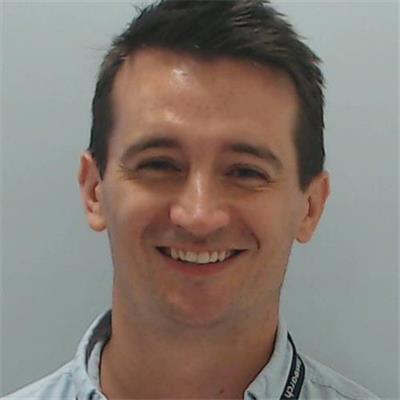
Studying brain development from the time of birth, through childhood and into adolescence.
Dr Ball's research combines Magnetic Resonance Imaging, bioinformatics and state-of-the-art machine learning models to discover the patterns that underlie typical brain development and identify the mechanisms that can lead to common neurodevelopmental disorders such as autism or ADHD. He is particularly interested in the impact of preterm birth on early brain development, and the long-term effects of early life adversity on a child's cognitive and functional outcomes.
Other aspects of Dr Ball's research program focus on the application of machine learning to identify abnormal movement patterns in infants at risk of developing cerebral palsy, the characterisation of pathological tissue types in paediatric brain tumour and modelling of structural connectivity networks in the brain.
Available projects include:
- Mapping cortical networks in the developing brain
- Modelling infant movements using video capture
- Combining neuroimaging and transcriptomics to model cortical development
Dr Ball's research combines Magnetic Resonance Imaging, bioinformatics and state-of-the-art machine learning models to discover the patterns that underlie typical brain development and identify the mechanisms that can lead to common neurodevelopmental disorders such as autism or ADHD. He is particularly interested in the impact of preterm birth on early brain development, and the long-term effects of early life adversity on a child's cognitive and functional outcomes.
Other aspects of Dr Ball's research program focus on the application of machine learning to identify abnormal movement patterns in infants at risk of developing cerebral palsy, the characterisation of pathological tissue types in paediatric brain tumour and modelling of structural connectivity networks in the brain.
Available projects include:
- Mapping cortical networks in the developing brain
- Modelling infant movements using video capture
- Combining neuroimaging and transcriptomics to model cortical development
Studying brain development from the time of birth, through childhood and into adolescence.
Dr Ball's research combines Magnetic Resonance Imaging, bioinformatics and state-of-the-art machine learning models to discover the patterns that underlie...
Dr Ball's research combines Magnetic Resonance Imaging, bioinformatics and state-of-the-art machine learning models to discover the patterns that underlie...
Studying brain development from the time of birth, through childhood and into adolescence.
Dr Ball's research combines Magnetic Resonance Imaging, bioinformatics and state-of-the-art machine learning models to discover the patterns that underlie typical brain development and identify the mechanisms that can lead to common neurodevelopmental disorders such as autism or ADHD. He is particularly interested in the impact of preterm birth on early brain development, and the long-term effects of early life adversity on a child's cognitive and functional outcomes.
Other aspects of Dr Ball's research program focus on the application of machine learning to identify abnormal movement patterns in infants at risk of developing cerebral palsy, the characterisation of pathological tissue types in paediatric brain tumour and modelling of structural connectivity networks in the brain.
Available projects include:
- Mapping cortical networks in the developing brain
- Modelling infant movements using video capture
- Combining neuroimaging and transcriptomics to model cortical development
Dr Ball's research combines Magnetic Resonance Imaging, bioinformatics and state-of-the-art machine learning models to discover the patterns that underlie typical brain development and identify the mechanisms that can lead to common neurodevelopmental disorders such as autism or ADHD. He is particularly interested in the impact of preterm birth on early brain development, and the long-term effects of early life adversity on a child's cognitive and functional outcomes.
Other aspects of Dr Ball's research program focus on the application of machine learning to identify abnormal movement patterns in infants at risk of developing cerebral palsy, the characterisation of pathological tissue types in paediatric brain tumour and modelling of structural connectivity networks in the brain.
Available projects include:
- Mapping cortical networks in the developing brain
- Modelling infant movements using video capture
- Combining neuroimaging and transcriptomics to model cortical development